Matador Network's Blog, page 776
September 28, 2020
Best US cities for coffee lovers

The United States runs on coffee. By some estimates, more than 60 percent of adults in the US regularly drink the beverage. Some cities, however, are far more hyped up on coffee than others.
WalletHub, a credit score improvement company, analyzed coffee consumption and prevalence for the 100 most populated US cities. It took into account the average spending on coffee per household, the number of coffee shops per capita, the Google search traffic for “coffee” in the city, and nine other key indicators — including some coffee-adjacent factors like the number of doughnut shops per capita. The data came from sources like the US Census Bureau, Yelp, Google Trends, and the US Bureau of Labor Statistics.
A few of the metrics driving the ranking have been deeply impacted by pandemic-related shutdowns. Coffee shops were forced to pivot from the role of work-hours meeting spot to takeout only in order to survive. On the production side, the pandemic drove questions about shortages in some of the largest coffee growing regions in the world. Yet people kept drinking coffee, even though they were staying home. This led to a surge in at-home coffee trends with international inspiration, like dalgona coffee and .
WalletHub added in factors of at-home coffee making and drinking. This includes the lowest average price for a pack of coffee, for example, which is led by cities like Miami, Houston, and Raleigh, NC (the highest prices, on the other hand, are centered around San Francisco and other parts of Northern California, along with Honolulu). The report also includes data on the highest percent of households that own coffee makers, led by Gilbert, AZ.
The ranking included some predictable results, though some of the cities typically associated with coffee obsessed residents are lower down than one might expect. New York City, for instance, only comes in at number 27, and Chicago doesn’t make an appearance until number 25. Both cities have plenty of coffee, but on a per capita basis neither hold up (New York and Chicago are tied for first when it comes to the number of doughnut shops per capita, though).
These are the top five cities in the US for coffee, according to the metrics WalletHub used (for the full list and methodology, check out the full report).
5. Tampa, Florida
Tampa has a strong coffee culture that can fuel any business trip to the city thanks to standbys like Blind Tiger Cafe, Buddy Brew, and Foundation Coffee. According to WalletHub, Tampa has the fourth most coffee shops and cafes per capita. The surrounding area isn’t all that bad either — WalletHub also found that some of the most affordable cappuccinos are just across the bay in St. Petersburg. While Tampa’s position on the list might make some raise their eyebrows, coffee-centric publications like Sprudge have been touting the rise of Tampa coffee for years.
4. Miami, Florida
Florida’s coffee prominence isn’t restricted to the northern part of the state. Miami, and the surrounding towns, is the best Florida location for coffee lovers on WalletHub’s ranking. It has the fifth highest number of adult coffee drinkers per capita, which is driven by a strong coffee shop presence (however, Miami falls in at number 96 when it comes to the percentage of households with coffee makers, which might explain the large number of cafes). It’s also tied at number one for the cheapest pack of coffee with Hialeah, a city that borders Miami.
3. Portland, Oregon
The first inklings of a craft coffee culture could be found in Portland, Oregon, in the 1990s. There are historic roasters and shops like Boyd’s Coffee Co., which opened in 1900, and Kobos Coffee, which opened in 1972. For a true trip down Portland’s coffee memory lane, Oregon Live collected historic photos of the city’s coffee peddlers. In the present day, WalletHub puts Portland at number one when it comes to the number of coffee and tea manufacturers in the country.
2. San Francisco, California
WalletHub found that San Francisco is at number two right after Portland for the number of coffee and tea manufacturers, and nearby Oakland isn’t too far behind San Francisco. Though it should also be noted that San Francisco is one of the most expensive cities for a pack of coffee. For a taste of what the city has to offer, Caffe Trieste has been caffeinating the city for a half-century, while Saint Frank puts the focus on independent roasters and specialty beans.
1. Seattle, Washington
It only makes sense that the original home of Starbucks tops the list. Just as the ubiquitous coffee chain changed the way the US thinks about coffee, it has helped shape Seattle’s coffee scene since it first opened in 1971. WalletHub found that Seattle has the third most coffee and tea producers in the country, and another study done by ApartmentGuide in 2019 put Seattle at number four when it comes to the highest overall number of coffee shops in the country. The latter study found 278 coffee shops, or one for every 2,308 people. 
More like thisCoffee + TeaHow climate change will drastically change coffee as we know it
The post The 5 best US cities for coffee lovers appeared first on Matador Network.

Indigenous Peoples' Day
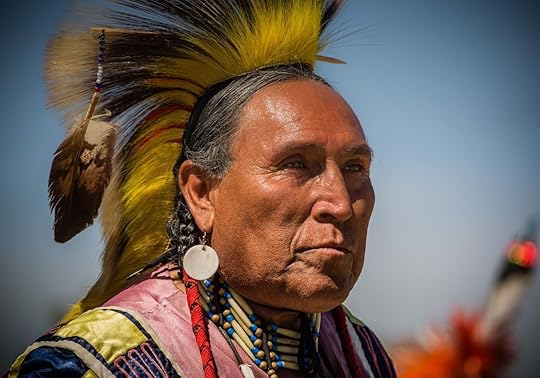
It is the second Monday in October, the day Congress named Columbus Day. My son bounds from his classroom. Eyes filled with brown warmth, he peeks out from under a cap of shiny dark hair; it’s the kind of black that shines red in sunlight. He is holding a milk carton cutout fashioned into the shape of a boat, with two smaller makeshift vessels trailing behind. Out of the corner of my eye I see children clutching newspaper sailor hats and Columbus’ ships coloring pages.
With his eyebrows curved in question marks my son tells me that there is also a song about Columbus, sung to the tune of “Oh, My Darling Clementine.” And then we both laugh at the absurdity. It’s both funny, and not funny.
We are a mixed-race, mixed-blood Native American family. My son has older siblings and he knows there is controversy surrounding Columbus and his day of recognition. But at age seven it’s not his job to carry the weight. As his mother, that responsibility belongs to me.
Columbus Day first became a federal holiday in the United States in 1937. After strong lobbying from the Knights of Columbus, President Franklin D. Roosevelt proclaimed Oct. 12, 1937, as the first Columbus Day. Over the years the holiday celebration has become controversial: The arrival of Columbus to the Americas — followed by the European settlers — heralded the beginning of devastating movements against indigenous people and the demise of their histories and cultures. As a European colonizer, he set the genocide in motion.
The story of Columbus’ discovery and the indigenous people he misnamed as “Indians” continues to affect us with a dual identity misunderstood by mainstream America. For more than 500 years, Native peoples have been measured and have competed against a Columbus fantasy over which they have no control.
Others argue that Columbus should not be honored for discovering North America because he only went as far as some islands in the Caribbean and never got as far as mainland America. Yet for many Americans, the Columbus myth has become real and a preferred substitute for reality.
Aside from the fact that I’m of Cherokee, Delaware, and Seneca descent, I am something else too — I am a woman. Rape of indigenous women of color became rampant and was tolerated by Columbus. A reported comrade, Michele de Cuneo, who wrote of a relation between himself and a Native woman gifted to him by Columbus, supports this information. There are also reported accounts of Native infants being lifted from their mothers’ breasts by Spaniards and smashed by rocks. The further I dig into history, more horrific acts are revealed. One account reports that he wrote in his journal on Oct. 14, 1492, three days after being greeted with kindness by the Lucayan people (the original inhabitants of the Bahamas), “I could conquer the whole of them with fifty men and govern them as I please.” As I try to disentangle truth from history, I wonder why we celebrate the man in such heroic terms if so much about him needed to be hidden.
Efforts to eliminate or rename Columbus Day in various states and cities have met strong resistance. In my hometown of Los Angeles, City Council voted to allow city employees to take Cesar Chavez Day as a paid holiday instead of Columbus Day, a move that prompted much objection. As a compromise, the council allowed city employees to celebrate either holiday. Finally the state eliminated the Columbus Day holiday as part of a budget-cutting measure, yet city and county offices still observe it. The Unified School District does not.
In 1992, the city of Berkeley was the first to declare the day Indigenous Peoples’ Day. Since then, many other cities and several states have either decided to swap the holidays, or recognize both. As of 2019, Vermont, Maine, Alaska, Oregon, Louisiana, Michigan, Wisconsin, North Carolina, Iowa, and Washington, DC celebrate Indigenous Peoples’ Day. South Dakota celebrates Native American Day, and Hawaii “Discovers’ Day,” which refers to the actual Polynesian discoverers of the island, and explicitly not Columbus.
And while the tides are shifting toward more people condemning the holiday and favoring alternatives like Indigenous Peoples’ Day, millions of Americans still prefer to celebrate Columbus Day. Many want to hold up the story they were told as children, and others now claim the holiday is about Italian pride. New York City’s Columbus Day Parade continues to thrive.*
To understand how deeply ingrained our US collective modern fantasy of Christopher Columbus has become, I turned to Google. A search for “Columbus activities for children” revealed 4,750,000 results with lesson plans, songs, and teaching ideas. It is clear this compliant Columbus image, edited and embellished, is still very much preferred, and being passed on to the youngest generation.
The conversation about why this matters simply must continue every year, until Native Americans are given the respect they are due, and the holiday is finally behind us. 
Editor’s note: The Columbus Day Parade is canceled for 2020 due to the COVID-19 pandemic though a virtual event will be held in its place.
A version of this article was previously published on October 10, 2016, and was updated on September 28, 2020, by the author with more up-to-date information regarding which states observe Indigenous Peoples’ Day.
More like thisCulture10 places in the US where you can experience Native American culture responsibly
The post It’s still important to challenge any recognition of Columbus Day appeared first on Matador Network.

Napa Valley closures from wildfires
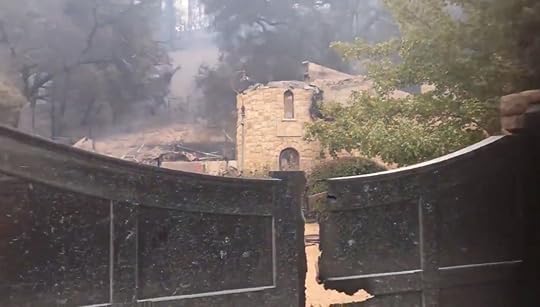
The California wildfires are not slowing down. The Glass Fire, which started over the weekend in the heart of Napa Valley between Calistoga and St. Helena, has spread quickly and 11,000 acres have already been lost in Napa and Sonoma.
Several wineries, vineyards, and resort properties reported serious damage on Monday morning.
More devastation from #GlassFire in Napa County. Saddened by losses at @CalistogaRanch @NapaSheriff @CAL_FIRE #ShadyFire pic.twitter.com/2irnpSoX9h
— Senator Bill Dodd (@SenBillDodd) September 28, 2020
On Sunday, the fire necessitated evacuations east of the Silverado Trail, including Calistoga Ranch, Château Boswell, the Meadowood Resort, and multiple vineyards and wineries. Thomas Rivers Brown, co-owner and winemaker at Mending Wall, told Wine Spectator, “It burned right up to the tasting room doors.”
#meadowood across the valley from St Helena. I just left there…they couldn’t save it. :(. #glassfire pic.twitter.com/rFVCbGrndD
— Adam Housley (@adamhousley) September 28, 2020
Chateau Boswell winery aftermath. This is on the Silverado Trail. The #GlassFire moved fast overnight. You can see in this video some hose lines were pulled, but this just moved too quickly for this winery to be saved. pic.twitter.com/pawOtA3NKt
— Amy Hollyfield (@amyhollyfield) September 28, 2020
The fire is believed to be worsened by strong winds, with gusts up to 70 mph on Mount St. Helena. The Glass Fire is burning just a few miles away from the LNU Lightning Complex fire, which ravaged Napa’s rural hills near Pope and Chiles valleys last month. Fire crews are working to contain the fire, though it remains strong and continues to be dangerous. 
More like thisWineThe classic wineries that put Napa on the map are still must-visits
The post Calistoga Ranch, Meadowood, and more Napa properties destroyed by Glass Fire (PHOTOS) appeared first on Matador Network.

Koalas may soon be endangered

As a consequence of the 2019-20 bushfires in Australia, as well as the continued habitat destruction, koalas might appear on the endangered species list. Now listed as vulnerable, koalas are one of 28 species that might have their threat status upgraded in Australia, joining the Blue Mountains perch, the Pugh’s frog, the Kangaroo Island crimson rosella, and the greater glider, among others.
The new koala designation would apply to the combined populations of New South Wales, Queensland, and the ACT, where over 10 percent of the koala population was affected by the devastating bushfires. This new designation is welcomed by environmental groups, which hope more attention and resources will be devoted toward saving the animals.
Once a species makes the priority list of endangered animals, it is assessed by the scientific committee, which makes a recommendation to federal environment minister Sussan Ley about its threat level. According to Ley, “This process is critical in ensuring threatened species are given strategic protection, are eligible for targeted funding and that awareness is raised about the issues impacting them.”
Earlier this year, after a year-long parliamentary inquiry conducted by the Australian state of New South Wales, koalas were deemed in danger of going extinct before 2050 in the region. 
More like thisWildlifeIt’s time to stop hugging koalas when you go to Australia
The post Koalas may be placed on the endangered species list thanks to severe population decline appeared first on Matador Network.

Arrest in Thailand for hotel review

If you’ve ever gone online to leave a review for a hotel, airline, or restaurant, you probably didn’t think there’d be any repercussions — after all, that’s what online review platforms are for. In Thailand, however, it’s not that simple. An American guest who was unhappy with the service he received at a resort hotel was arrested and spent two days in jail for criminal defamation.
After Wesley Barnes, an American citizen who lives and works in Thailand, visited the Sea View Resort Koh Chang on the island of Koh Chang, he left negative reviews on TripAdvisor and Google that the hotel judged to be unfair. Unable to reach Barnes and stop him from posting negative reviews, they called the police and filed a complaint under the nation’s criminal defamation law.
Thailand’s defamation laws are very severe, in particular when it comes to online content. A couple of weeks ago, a friend of a friend was arrested at his school for posting a one star review on Google maps about a resort he visited on Koh Chang. Yes, you heard right [THREAD] pic.twitter.com/18YDRoWit1
— Richard Barrow in Thailand
CDC Halloween guidelines

In advance of the holiday season, the US Centers for Disease Control and Prevention issued new guidelines aimed at potential holiday party hosts and attendees. In a Monday announcement, it defines low-risk gatherings as those that take place virtually or involve only a person’s immediate household. Outdoor gatherings are also recommended, and measures like mask-wearing and social distancing should also be exercised.
Even more specifically, the CDC recommends substituting potluck-style food for a bring-your-own scenario, and getting single-use plates and silverware.
Celebrations like Halloween trick-or-treating, Dia de los Muertos gatherings, Thanksgiving parades, and Black Friday shopping should also be avoided, with the CDC suggesting virtual alternatives. The CDC didn’t “cancel” trick-or-treating altogether, though. It recommends an Easter-egg-style hunt for candy around one’s own home as an alternative or “one-way trick-or-treating where individually wrapped goodie bags are lined up for families to grab and go while continuing to social distance.”
Decorating your home in spooky gear, dressing up, and going to a pumpkin patch are all safe Halloween activities and should keep the holiday as fun as possible in these unprecedented times. 
More like thisHolidays7 fascinating Halloween traditions around the world
The post CDC issues official advice on how to celebrate Halloween this year appeared first on Matador Network.

September 25, 2020
David Attenborough joins Instagram

Famous naturalist David Attenborough joined Instagram for the first time yesterday, and within 24 hours he has gathered 3.2 million followers. Attenborough didn’t make an Instagram for the attention, though. He immediately posted a video with a heartfelt message warning about the dangers of climate change, with the goal of using social media to spread awareness and rally people behind this extremely important issue.
Voir cette publication sur InstagramUne publication partagée par A Life On Our Planet (@davidattenborough) le 24 Sept. 2020 à 2 :00 PDT
The one-minute video is accompanied by a caption that reads, “David Attenborough has spent a lifetime travelling, exploring the wild places of our planet and documenting the living world in all its variety and wonder. He’s also witnessed the damage caused. Saving our planet is now a communications challenge. We know what to do, we just need the will.”
It goes on to say, “That’s why we want to share this message on Instagram. Because there is hope and together, we can inspire change. Social media isn’t David’s usual habitat so while he’s recorded messages solely for Instagram, like the one in this post, we’re helping to run this account. In case you’re wondering, ‘we’ are Jonnie and Colin and we worked with David on A Life On Our Planet. So, as well as sharing the messages he’s recorded especially for this account we’ll also post some exclusive clips and behind the scenes content. Stay tuned.”
To date, the video has almost 13 million views.
In the video, Attenborough says, “As we all know, the world is in trouble. Continents are on fire, glaciers are melting, coral reefs are dying, fish are disappearing from our oceans. The list goes on and on. But we know what to do about it.”
He also informed viewers that over the next few weeks, he will be recording messages to talk further about the climate emergency and how we can address them. So as Attenborough says, stay tuned. 
More like thisNewsAirbus says it will make hydrogen-powered, zero-emissions airplanes by 2035
The post David Attenborough joins Instagram and gains millions of followers in just one day appeared first on Matador Network.

How to volunteer on public lands

A lot of us take our wild spaces for granted. When we need a break to recharge, most of us can take a walk or a hike in a public park nearby. For those of us near large bodies of water, we can hang out with friends by the beach, and when it comes time for a family vacation, a trip to a national or state park is a classic option.
But the reality is that our national public lands need our help. They are under attack from a government that prioritizes business interests over environmental preservation — as seen in the opening of Utah’s Bear Ears to mining companies. Even local governments rarely allocate enough funding to properly maintain state and city parks.
Luckily, you don’t have to sit idly by as these natural places fall apart. Even if you don’t have the money, here are some great ways you can volunteer to help restore the environment on national public lands.
1. Restore habitats at national wildlife refuges.

Photo: USFWS National Wildlife Refuge System/Facebook
The challenges facing our wild spaces are endless, from endangered species to water contamination, to climate change. Volunteering is a fantastic way to help the National Wildlife Refuges, part of the US Fish and Wildlife Service, take on these issues. As a volunteer, you can help save turtles, remove invasive species, or conduct animal and plant surveys. If working with people is more your thing, you can also help teach elementary schoolers or lead tours.
The National Wildlife Refuge welcomes volunteers of all backgrounds. The more people who can help them in their challenging task of saving the planet’s incredible biodiversity, the better.
2. Clear trails at national forests.
The National Forest Service has always included citizens as a part of its maintenance of the 193-million-plus acres of protected lands. The Forest Service is also chronically underfunded, so volunteers helping out is important. Ways you can do this include clearing trails, helping scientists conduct research, or working in visitors centers. As a volunteer, you won’t get paid for this, but the Forest Service will reimburse any expenses. And if you end up volunteering more than 250 hours on federal lands — from national parks and forests to Bureau of Land Management lands — you can get an Interagency Volunteer Pass, which you can use to bring you and three guests to any of these places for free for one year.
3. Go “plogging.”

Photo: David Pereiras/Shutterstock
Plogging is the perfect way to combine a workout with good work for the planet. The word combines the Swedish word for picking up with “jogging” and involves going for a jog or hike with a trash bag in hand — and maybe rubber gloves, too — cleaning up trash from the natural areas you are out enjoying. You can find plogging groups near you on Facebook.
4. Participate in a local cleanup.
There are guaranteed to be plenty of city park clean-up opportunities where you live. In New York, check the NYC Parks volunteer page; in San Francisco, try the SF Rec & Parks. Denver has its own park volunteer options, and so on. Pretty much every US municipality will make it easy for you to find out about and get involved in sprucing up your local green spaces. If you’re on the coast, there are usually groups that organize beach clean-up events. In San Francisco, the Surfrider Foundation has organized a few beach clean-ups. If you don’t find a park or beach clean-up to join, you can always organize one with friends and family yourself.
4. Volunteer at a national park.

Photo: National Park Foundation
Volunteering at a national park can be more involved, as they are not always close to where you live. But national parks are never short of things to do and ways you can help out. Depending on your interest and skill set, you may even be able to do pretty hands-on stuff like helping band birds, doing land surveys, or studying forest health. If you’re more of a people person, you can volunteer at visitors centers. Many volunteer opportunities require special skills, and longer-term opportunities may require a background check since national parks provide housing to their volunteers.
5. Volunteer virtually.
National, state, and local parks have all been investing in virtual engagement opportunities, and you can help out in the effort. It’s become easier than ever to engage with park services without leaving your home. While there are tons of virtual tours one can join, there are also new volunteer opportunities that are all online. For example, bird watchers can track bird migrations with eBird or count diverse animal species with Zooinverse.
6. Search Volunteer.gov for an opportunity that suits you.
Public lands always need a helping hand, so if you have a special skill that you would like to put to use, check Volunteer.gov to see if there is a volunteer opportunity that speaks to you. You can type in keywords like “public lands” and get really specific on the area that interests you, the type of work, what level, how big a commitment you want to make, and all the details you need to find an opportunity to give back that you will find fulfilling and that will make a real difference for our public lands. 
More like thisParks + Wilderness7 beautiful, underrated public lands to visit in the eastern US
The post Volunteering on national public lands is easy and very gratifying. Here’s how to do it. appeared first on Matador Network.

United to offer COVID-19 testing
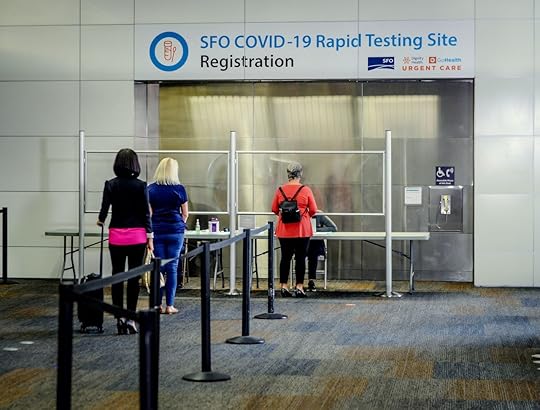
United Airlines is the first US airline to offer COVID-19 testing to customers. The new pilot program will make testing available for passengers en route to Hawaii from San Francisco starting on October 15.
United will provide travelers with the option of taking a rapid test administered at the airport’s international terminal on the same day that flights depart from SFO. A negative result will allow passengers to avoid Hawaii’s 14-day quarantine. The airline will also offer customers the option of a mail-in test that can be taken and submitted prior to departure, so they are aware of the result before they show up at the airport.
The test at the airport will cost $250, while the mail-in test will be $80.
Customers can schedule their on-site testing online in advance and will receive their results in just 15 minutes. The testing area will be open from 9:00 AM to 6:00 PM daily.
According to a United press release, “The airline worked closely with Hawaii officials to ensure that any United customer — both visitors and Hawaiian residents returning home — who tests negative on either test would not be subjected to the state’s current 14-day quarantine requirement.”
Hawaii’s official rules state that passengers must present a negative test taken within 72 hours of arrival. Visitors can avoid quarantine only if “they are tested no earlier than 72 hours before their flight arrives with an FDA-approved nucleic acid amplification test (NAAT).”
If the pilot program proves successful, it will likely be expanded to other US airports and destinations later this year. 
More like thisTravel SafetyCan we trust negative COVID-19 tests as a green light for travel? We asked a travel doctor.
The post United is the first US airline to offer COVID-19 testing at airport appeared first on Matador Network.

Most remote wineries in the world
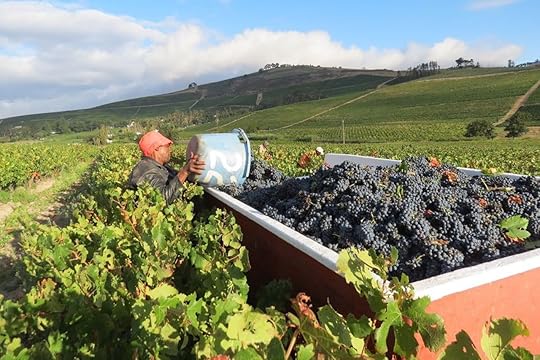
The need to escape from the monotony of daily life these days is all too real. And when travel is safe again, you might feel the desire to get as far away as possible, perhaps with a drink in hand. These wineries and regions are as far from what’s generally thought of as “wine country” as you can get. Sometimes that means a winery on a tropical island; other times it means vineyards in the mountains. The only word that is applicable to all of these wineries is remote.
1. Vin de Tahiti in French Polynesia
Tahiti is the farthest one can get from what’s typically thought of as a traditional wine-producing region. The closest, in Chile and Australia, are more than 4,000 miles away. But that didn’t stop French businessman Dominique Auroy from starting a winery.
Vin de Tahiti is located on the Rangiroa atoll, which sits in the Pacific ocean around a 55-minute flight from Tahiti. The first harvest started in 1999, and it makes around 3,000 cases of wine a year from its 15 acres of vineyards. The vineyards are slightly off from the winery, however, and the grapes are transported by boat to be crushed and fermented.
The island is in a perpetual summer when it comes to temperature — the average high temperature for the year never drops below 79 degrees Fahrenheit, and the average low is between 65 and 71 degrees Fahrenheit. This, of course, has a massive impact on the grapes. According to a 2019 Wine Spectator story, Vin de Tahiti has had 50 harvests since the vines first bore fruit in 1999. The vineyard typically has a harvest in May (the austral winter harvest) and one in December (the austral summer harvest).
The winery makes three white wines: Blanc de corail and Monamona, both made with muscat Hamburg grapes, and Clos du Récif, which is made with carignan. Vin de Tahiti also makes a rosé wine called Nacarat from the muscat Hamburg grape.
How to visit: The winery and rhum cellars are open for visitors Monday through Saturday. You’ll have to find your own way to the winery, however, and reservations are recommended.
2. Volcano Winery in Hawaii
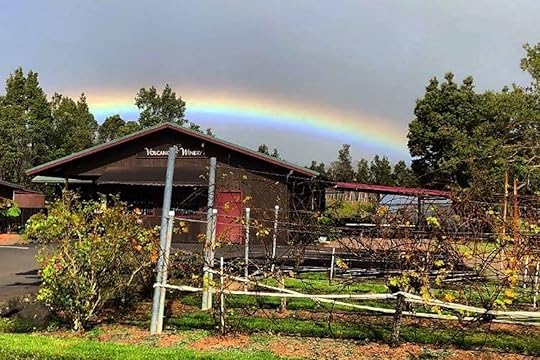
Photo: Volcano Winery/Facebook
Hawaii, like Tahiti, is far from the rest of the wine-producing world. In fact, Hawaii is about as close to Tahiti, around 2,600 miles, as it is to California. Volcano Winery has one of two vineyards in the state and is the only one on the big island of Hawaii.
The naming influence here is obvious, as you’re never far from a volcano in Hawaii. The winery gets its name from Mauna Loa, the largest active volcano in the world at about 13,100 feet above sea level. Volcano Winery lands at about 4,000 feet, and a retired Oahu veterinarian named Lynn McKinney started the winery in 1986 (and opened it to the public in 1993).
Many traditional wine grapes struggle with the climate. McKinney first opted for symphony grapevines, a variety created to withstand hot weather that’s a cross between muscat of Alexandria and grenache gris. It was invented by a viticulture professor from the University of California, Davis in 1948 and released commercially in 1982. McKinney also blended starfruit, passionfruit, and papaya into the wines — a practice that continued after the winery was purchased in 1999 and lives on today.
After a fire took out many of the original vines in 2000, pinot noir was planted alongside French-American hybrid varieties like marchael foch, chambourcin, and cayuga white. There’s a little something for everyone here. If you’re in a tropical mood, you can go for the wines blended with fruit or the estate-grown tea. If you’re looking for an island take on something more traditional, opt for one of the varietal wines.
How to visit: Stop by before or after a visit to the nearby Hawaii Volcanoes National Park. It’s located in Volcano, Hawaii, and is open every day of the year but Christmas.
3. Tierra Roja in Bolivia
Bolivia’s southern neighbors Argentina and Chile are famous for their wines. Bolivia has a similar wine history as those two countries that dates back to the arrival of colonial Spain in the 16th century. It hasn’t quite caught on in the same way, but there’s still a lot of tradition when it comes to grape types and production methods.
A remote wine region to have on your radar is the Valle de los Cintis in the far south of the country. The valley is surrounded by red rock cliffs on either side. Here, you’ll find around 30 small-scale vineyards that shade their grapevines with trees and other climbing plants called parrales just like the Spanish did centuries ago, according to the New York Times. Another holdover from the Spanish are the vino patero wines, which are named after the foot-stomping crush method rather than the grape.
More popular European varieties are grown here as well, including cabernet sauvignon, syrah, and muscatel. Winemakers originally supplied those who came for the silver boom in nearby Potos. They used glass demijohns and relied on the muscat of Alexandria, which is one of the oldest grape varieties not just in Bolivia but in the world. The variety has special resonance with Bolivians as the grape type also used for Singani, the country’s beloved brandy.
When you get to the region, it’s best to explore the various small family wineries from the ground. A standout is Tierra Roja.
How to visit: The easiest way to get to Cinti is by car from Tarija. Play it by ear to see which wineries are open. The Bolivian government’s wine education group Wines of Bolivia is a good place to start before planning a trip.
4. Hatten Wines in Bali
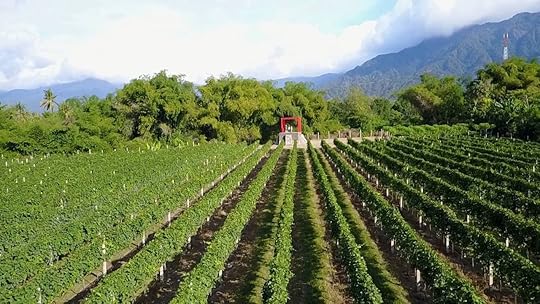
Photo: Hatten Wines/Facebook
Vineyards aren’t the first thing that come to mind when people think of the Bali lifestyle. That hasn’t stopped Hatten Wines, however, which has vineyards between the villages of Seririt and Sanggalangit on the northern coast of the island.
The equatorial climate is hot and humid — the average temperature hovers around 95 degrees Fahrenheit. And while there are volcanic soils, the vineyard sits at around 160 feet above sea level. Hatten Wines commonly goes through three harvests a year with 10 grape varieties in the fields, including syrah, chenin blanc, and the local hybrid muscat St. Vallier. Hatten Wines isn’t afraid to experiment. There are sparkling wines made in the French méthode-traditionnelle style (the same used in Champagne), as well as fortified wines aged in the solera method (a way of continuously aging old and new wines in a large barrel).
How to visit: The winery is to the south in Sanur, as is the tasting room, called the Cellardoor. Another tasting room of the same name is in Jakarta. Vineyard tours and tastings are available too if you are in the north.
5. Ao Yun near Shangri-La City, China
Remote wineries typically fall into two categories: Those that started as a passion project and those that are following centuries-old tradition. Ao Yun is something else entirely. LVMH (Louis Vuitton, Moët, Hennessy) founded the winery to establish a world-class French-style wines in China. Australian winemaker Tony Jordan was tasked with finding a suitable spot for a vineyard anywhere in the country, and he chose a largely undeveloped spot at the foothills of the Himalayas between 7,200 and 8,500 feet above sea level.
The winery’s name, Ao Yun, means “flying above the clouds” in Mandarin. The vineyards span across four villages that have a number of different microclimates. The workers are Buddhist, according to a profile of the winery in Worth, and the vines are organic with barley in between the rows to serve as yak food for local families. Ao Yun winemaker and estate manager Maxence Dulou focuses on Bordeaux-style blends of cabernet sauvignon, cabernet Franc, and merlot, as well as a little petit verdot and syrah.
Because the winery is owned by LVMH, it’s not your run of the mill winery that you can visit anytime. It’s fair to say that most people who want to won’t even get to try the couple thousand cases produced every year.
How to visit: Join the waiting list and get in contact with the winery here.
6. Mount Sutherland in South Africa
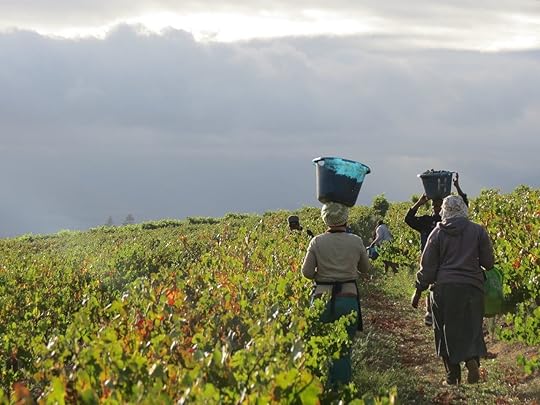
Photo: Ingrid de Waal/Facebook
Much of South Africa’s wineries are near the coast. Winemaker Daniël de Waal wanted to try something a little different. Mount Sutherland is part of Super Single Vineyards, which focuses on single-vineyard wines, as the name suggests. The vineyard is located in the foothills of the Sneeuberg mountain range about 5,000 feet above sea level, and there’s a dormant volcano called Salpeterkop near one corner. It’s both the highest and the coldest vineyard in Africa, by the brand’s own reckoning.
Mount Sutherland is managed without pesticides. The winters are hard, but the summers have the hot days and cool nights that wine grape vines love. The vineyard produces a number of old-world varieties like pinot noir, syrah, and riesling.
How to visit: While you can’t visit the winery itself, you can try the wines at the Canettevallei Lavender And Wine Farm tasting room that de Waal owns in Stellenbosch, South Africa. 
More like thisWineThe ultimate American wine road trip, mapped
The post 6 of the most remote wineries in the world appeared first on Matador Network.

Matador Network's Blog
- Matador Network's profile
- 6 followers



